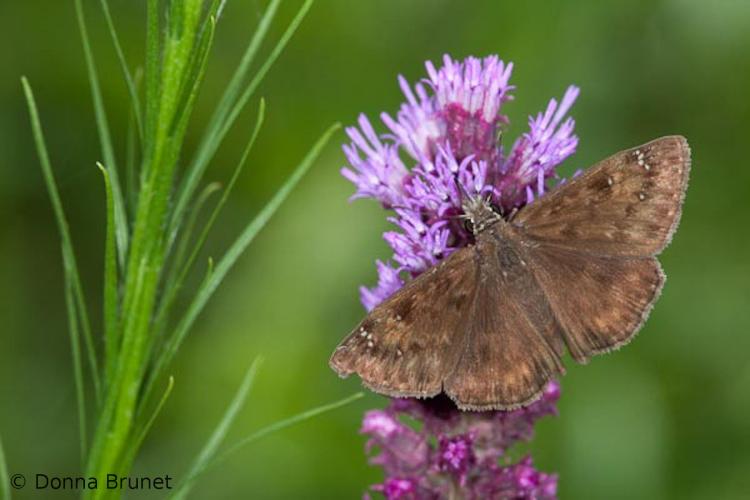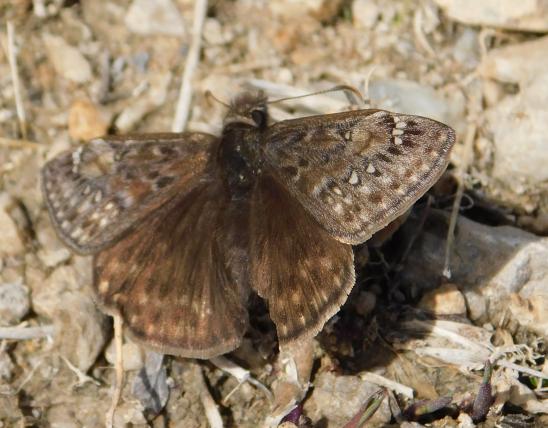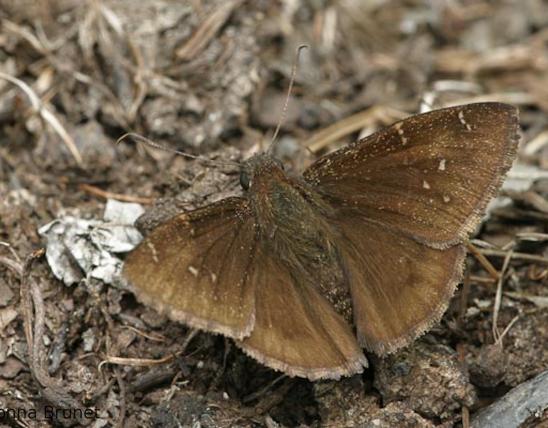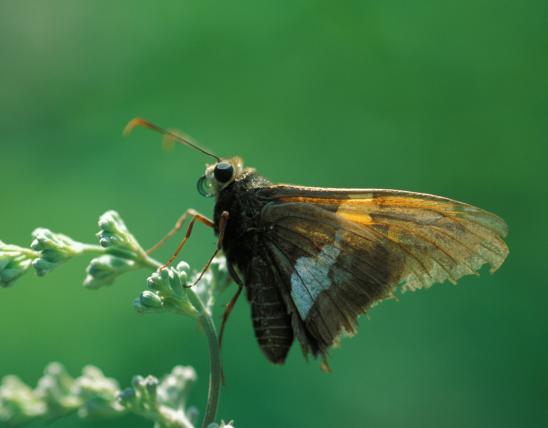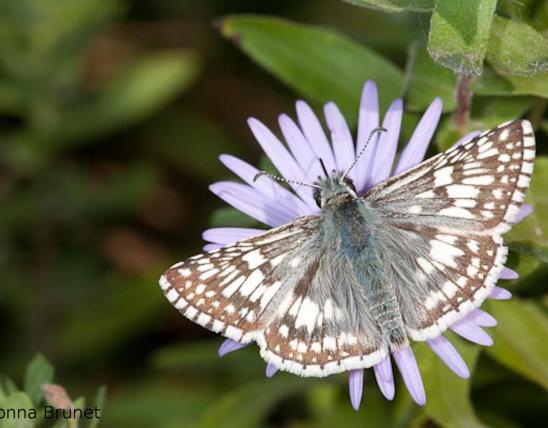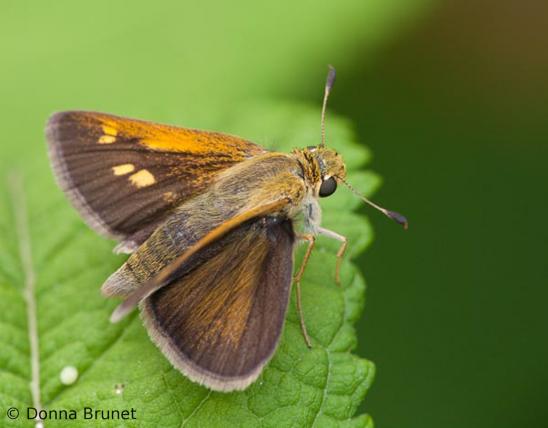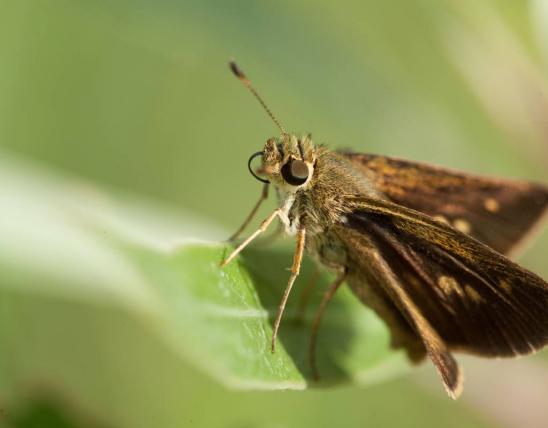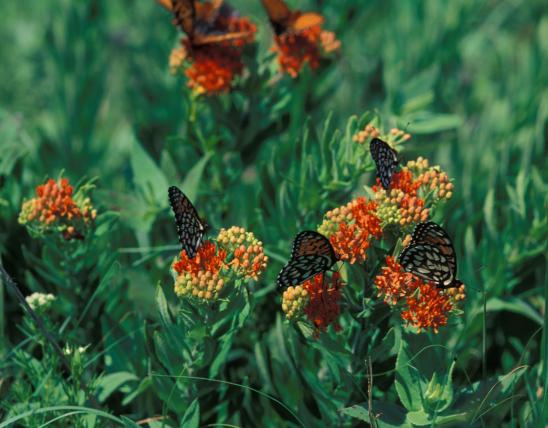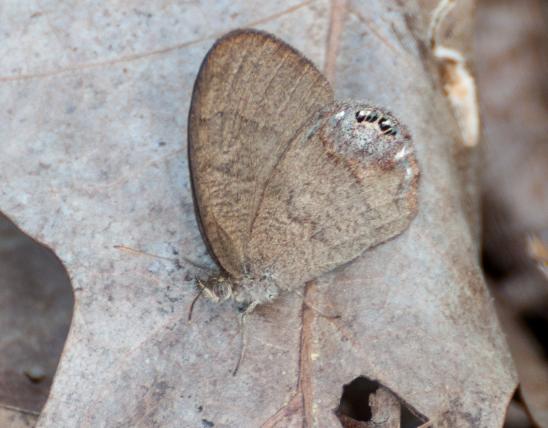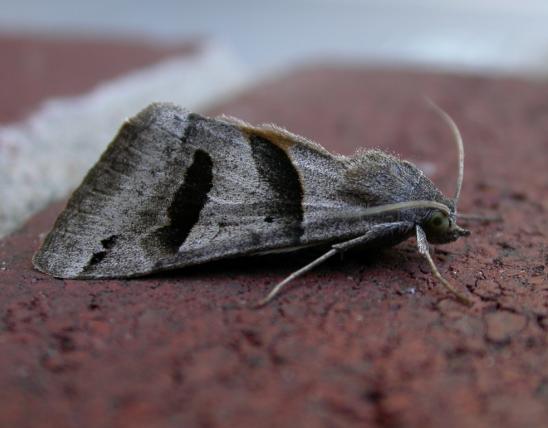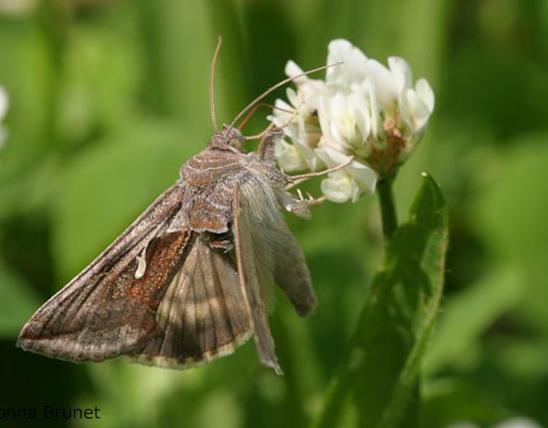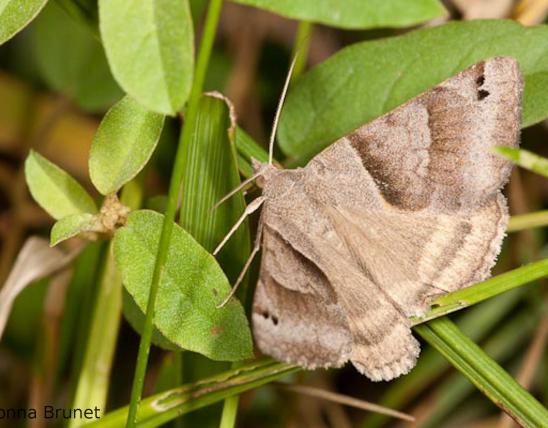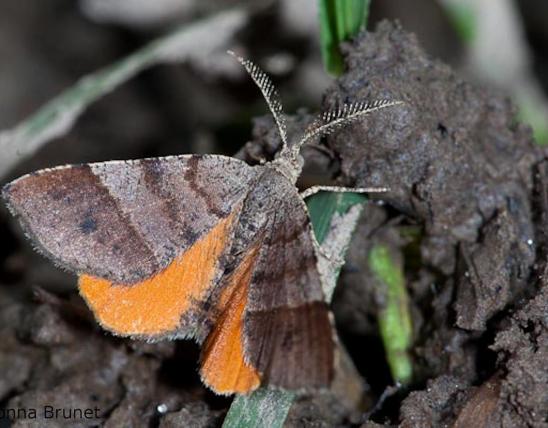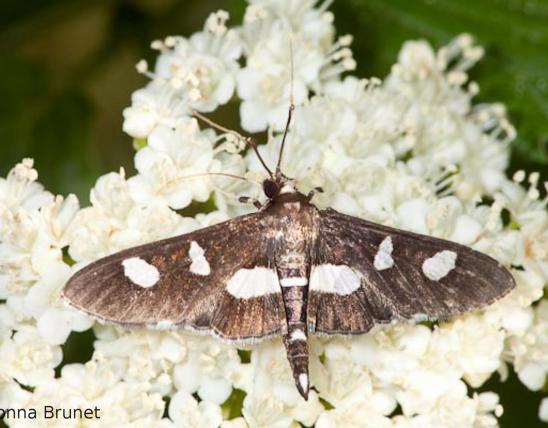
In Horace's duskywing, both males and females have white spots on the forewing, including a white spot in the forewing cell (the oval space between veins that is toward the leading edge of the forewing, near the body); white spots are larger on females. The overall color is brown without a hint of gray. Males have a bold white line over the eye.
As a spread-winged skipper, this species most often rests with all four of the wings held out flat to the side.
Larvae are bluish green with tiny, light-colored spots; the head is brown with orange blotches around the margin; the body tapers at the end.
Similar species: The ventral (lower) side is the easiest way to separate this species from Juvenal’s duskywing (E. juvenalis): Juvenal’s has two pale spots toward the tip of the ventral hindwing. Also, by late May, the Juvenal’s duskywing has disappeared; after that, Horace’s is the only duskywing in Missouri with a white spot in the forewing cell.
Wingspan: 1¼–1½ inches.

Statewide.
Habitat and Conservation
Flies in forest clearings and edges, brushy fields, roadsides, and yards. The adults are often seen on flowers and at mud puddles.
Food
Larvae feed on the leaves of oaks. The adults frequent flowers that are about 4 feet tall, including buttonbush, dogbane, goldenrod, and others in the sunflower family, plus mints and mustards.
Status
Resident with multiple broods.
Life Cycle
Flies from late March until mid-October. The life history is similar to other duskywings. Males visit puddles shortly after emerging, then perch on twigs to intercept passing females. Females lay eggs singly; caterpillars feed on young leaves, taking shelter in leaf nests when not actively feeding. Fully grown caterpillars overwinter in their nests in the leaf litter below the tree and pupate in their nests in spring.
Human Connections
Skippers are grouped in the same superfamily as butterflies, although in the past they have been considered separate from both butterflies and moths. Taxonomists are biologists who study the names of organisms and the relationships among them. Today taxonomists use the tool of DNA evidence to refine our knowledge.
The names of the closely related Horace's and Juvenal's duskywings reference two of ancient Rome's greatest poets and satirists. Horace (Quintus Horatius Flaccus, BC 65–8) had a huge influence on the craft of writing that continues to the present day. Back in the 1700s and 1800s, several species in this genus received names based in Greek and Roman literature. The scientists who names them grew up at a time when classical literature (ancient Greek and Latin) was considered the foundation for an educated mind.
Ecosystem Connections
The caterpillars are herbivores that graze on vegetation. The adults serve a role in pollination. All stages provide food for predators.
